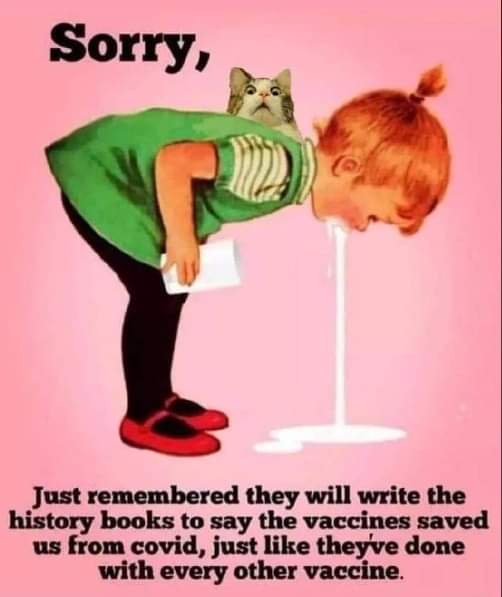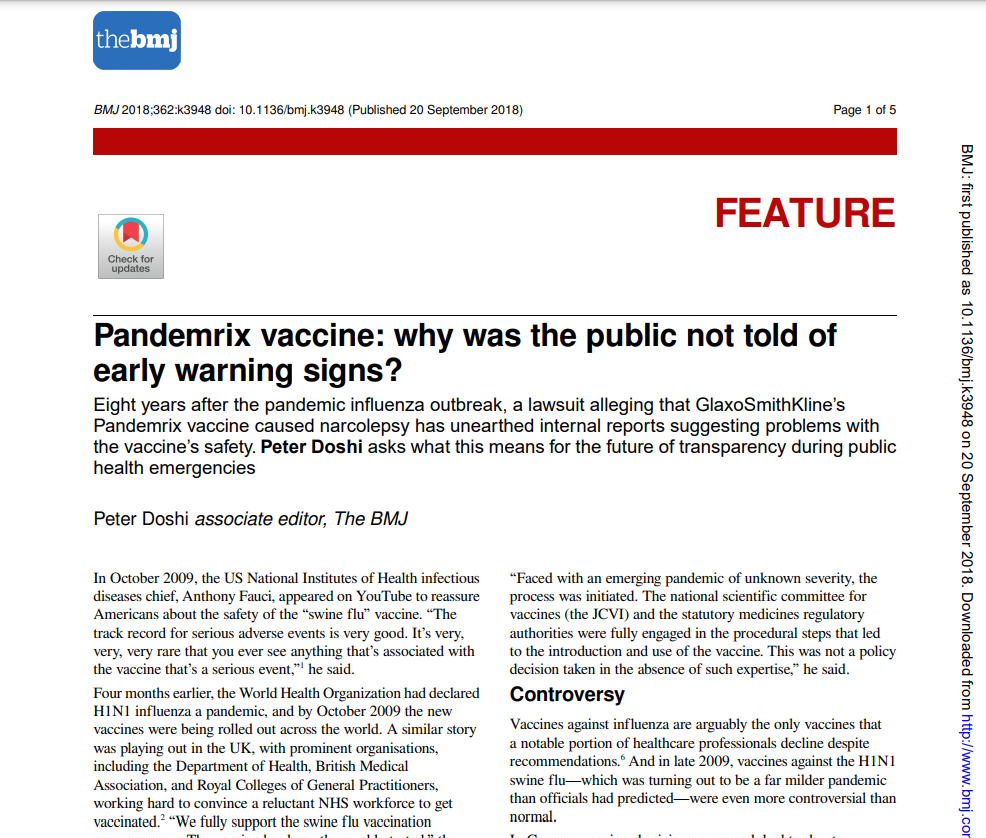History is repeated. With the recall of AstraZeneca, people are now made to believe that the AstraZeneca vaccination was the only one that really harmed the recipients. However, Moderna and Pfizer have caused significantly more harm.
In yesterday’s piece, we saw how the vaccine Pandemrix was found to cause narcolepsy during the H1N1 pandemic. It was also recorded that other vaccines, like Focetria, did not. Do you see the same pattern with AstraZeneca vs Pfizer and Moderna? In this piece, I will tackle a 2018 piece, now archived, by The BMJ titled: “Pandremrix vaccine: why was the public not told of early warning signs?” You are welcome to check it out here. The article, written by Peter Doshi, associate editor of The BMJ reads:
“‘In October 2009, the US National Institutes of Health infectious diseases chief, Anthony Fauci, appeared on YouTube to reassure Americans about the safety of the ‘swine flu’ vaccine. ‘The track record for serious adverse events is very good. It’s very, very, very rare that you ever see anything that’s associated with the vaccine that’s a serious event,’ he said. Four months earlier, the World Health Organization had declared
H1N1 influenza a pandemic, and by October 2009 the new vaccines were being rolled out across the world. A similar story was playing out in the UK, with prominent organisations, including the Department of Health, British Medical Association, and Royal Colleges of General Practitioners, working hard to convince a reluctant NHS workforce to get vaccinated.
‘We fully support the swine flu vaccination programme … The vaccine has been thoroughly tested,” they
declared in a joint statement. Except, it hadn’t. Anticipating a severe influenza pandemic, governments around the world had made various logistical and legal arrangements to shorten the time between recognition of a pandemic virus and the production of a vaccine and administration of that vaccine in the population. In Europe, one element of those plans was an agreement to grant licences to pandemic vaccines based on data from pre-pandemic ‘mock-up’ vaccines produced using a different virus (H5N1 influenza).
Another element, adopted by countries such as Canada, the US, UK, France, and Germany, was to provide vaccine manufacturers indemnity from liability for wrongdoing, thereby reducing the risk of a lawsuit stemming from vaccine related injury. In an interview with The BMJ, Liam Donaldson, England’s chief
medical officer at the time, recalled the situation around the October 2009 roll-out: “The UK had worked for several years on its pandemic influenza plans, as part of a globally coordinated approach. This included, well in advance, establishing the process for developing and introducing a vaccine in such a public health emergency.
‘Faced with an emerging pandemic of unknown severity, the process was initiated. The national scientific committee for vaccines (the JCVI) and the statutory medicines regulatory authorities were fully engaged in the procedural steps that led to the introduction and use of the vaccine. This was not a policy decision taken in the absence of such expertise,’ he said.
Controversy
Vaccines against influenza are arguably the only vaccines that a notable portion of healthcare professionals decline despite recommendations. And in late 2009, vaccines against the H1N1 swine flu—which was turning out to be a far milder pandemic than officials had predicted—were even more controversial than normal.
In Germany, senior physicians expressed doubts about GlaxoSmithKline’s Pandemrix vaccine. They were concerned about potential side effects triggered by the AS03 adjuvant, an oil-in-water emulsion that it contained to boost effectiveness. Then controversy erupted when the German newspaper Der Spiegel reported that top politicians and government employees were going to receive Celvapan, Baxter’s unadjuvanted H1N1 vaccine, not Pandemrix.
The concerns, it seems, were prescient. A year later, signs of a problem with Pandemrix were emerging through postmarket reports of narcolepsy, predominantly among children and adolescents in Sweden and Finland. Multiple academic and government led studies subsequently judged that the relation between Pandemrix and narcolepsy was likely to be causal. Over 1300 people are estimated to have been affected among the roughly 30 million vaccinated across Europe,12 including around 100 families in the UK. However, GSK and the European Medicines Agency, which licensed Pandemrix, have not accepted that the association with narcolepsy has been proved to be causal, and research on the topic continues. GSK told The BMJ that ‘further research is needed to confirm what role Pandemrix may have played in the
development of narcolepsy among those affected.’
Claims for compensation followed, with many still being fought in the courts. Now, eight years after the outbreak, new information is emerging from one of the lawsuits that, months before the narcolepsy cases were reported, the manufacturer and public health officials were aware of other serious adverse events
logged in relation to Pandemrix.”


